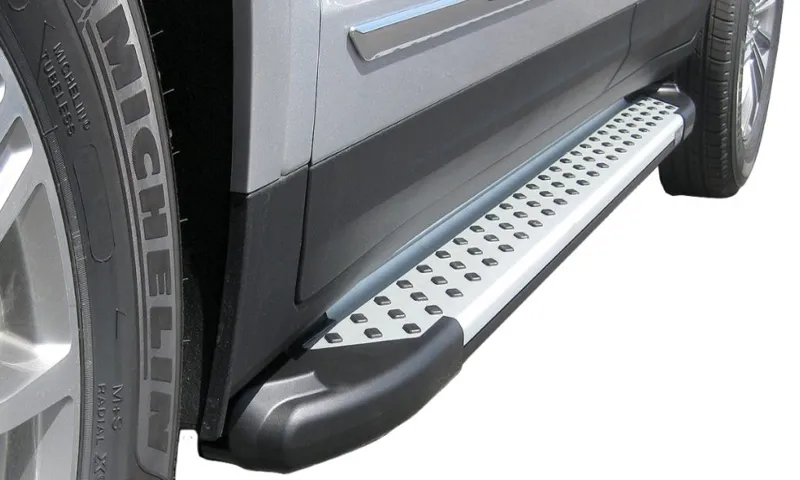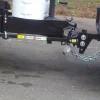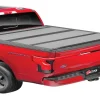So you’ve got a van, and you’re looking to make it even more practical and stylish. One accessory that you might want to consider is a running board. But what exactly is a running board and why should you install one on your van? A running board is a flat surface that is attached to the sides of a vehicle, typically just below the doors.
It serves as a step, making it easier for passengers to enter and exit the vehicle. Running boards can be made from a variety of materials, such as stainless steel, aluminum, or fiberglass, and they come in different styles and designs to suit your personal taste. But why should you bother installing a running board on your van? Well, there are several reasons.
Firstly, it provides an added level of convenience. If you have passengers who may have difficulty stepping up into the van, a running board can make it much easier for them to get in and out. It can also be useful if you often carry heavy or bulky items, as it provides a stable platform for loading and unloading.
In addition to the practical benefits, running boards also add a touch of style to your van. They can enhance the overall look of the vehicle, giving it a sleek and finished appearance. Think of it as the cherry on top of the cake, adding that extra bit of flair to your van’s exterior.
Installing a running board on your van is also a smart investment. It can increase the resale value of your vehicle, as it is considered an attractive feature by potential buyers. So not only do you get to enjoy the benefits of a running board while you own the van, but you may also see a return on your investment when it comes time to sell.
Overall, a running board is a practical and stylish accessory for your van. It provides convenience, enhances its appearance, and adds value. So why not take the leap and install one on your van today? You won’t regret it!
Table of Contents
Tools and Materials: What you’ll need to install a running board
If you’re looking to add some style and functionality to your van, installing a running board is a great option. Not only does it enhance the overall appearance, but it also provides a convenient step to assist both the driver and passengers in easily getting in and out of the vehicle. To install a running board on your van, you’ll need a few tools and materials.
First, you’ll need a set of running boards that are compatible with your specific make and model of van. You’ll also need a drill, drill bits, and screws to secure the running boards to the underside of the vehicle. Additionally, you may need a wrench or socket set to tighten any bolts or brackets.
It’s also a good idea to have a tape measure and a level on hand to ensure the running boards are properly aligned and evenly spaced. Finally, you’ll need a friend or family member to assist you with the installation process, as holding the running boards in place while securing them can be challenging to do alone. With these tools and materials, you’ll be well-equipped to install a running board on your van and enjoy the added convenience and style it brings.
Step 1: Measure and mark the placement of the running board on your van
install a running board, measure and mark, van Installing a running board on your van can greatly improve accessibility and make it easier to get in and out of your vehicle. But before you start, it’s important to measure and mark the placement of the running board to ensure a proper fit. To do this, you’ll need a measuring tape, a marker or chalk, and a ladder or step stool to reach the height of your van.
Begin by positioning the running board against the side of your van at the desired height. Use the measuring tape to measure the distance from the ground to the bottom of the running board. Then, use the marker or chalk to mark the placement of the running board on the van.
Make sure to measure and mark on both sides of the van to ensure symmetry. Once you have the placement marked, you’re ready to move on to the next step in the installation process.

Step 2: Prepare the running board for installation
When it comes to installing running boards on your vehicle, preparation is key. Before you can begin the installation process, you’ll need to make sure you have all the necessary tools and materials. Some of the tools you’ll need include a wrench, a socket set, a drill with a drill bit, and a torque wrench.
You’ll also need a measuring tape, a marker or pencil, and a level to ensure that the running boards are installed evenly. In addition to the tools, you’ll also need a running board kit, which typically includes the running boards themselves, brackets, and mounting hardware. It’s important to make sure that you have all the necessary materials before you start the installation process to avoid any delays or complications.
By being prepared and having all the right tools and materials, you’ll be able to install your running boards quickly and efficiently. So gather your tools and let’s get started!
Step 3: Install the mounting brackets on the van
One of the important steps in installing running boards on your van is to properly install the mounting brackets. These brackets are what will hold the running boards securely in place. Before you begin, make sure you have all the necessary tools and materials.
You will need a wrench, a socket set, a drill, a tape measure, and the mounting brackets that came with your running board kit. Start by measuring and marking the correct placement for the brackets on your van. Then, use the drill to create holes where the brackets will be attached.
Once the holes are drilled, attach the brackets using the provided screws and bolts. It’s important to make sure the brackets are securely tightened to ensure the running boards will be stable and safe to use. Take your time and double-check your measurements to ensure proper alignment and positioning of the brackets.
With the mounting brackets installed, you can move on to the next step of the installation process.
Step 4: Attach the running board to the mounting brackets
Installing a running board on your vehicle can provide both style and functionality. Once you have assembled the mounting brackets according to the manufacturer’s instructions (which we covered in the previous step), it’s time to attach the running board. This step requires a few tools and materials to ensure a sturdy and secure installation.
Here’s what you’ll need: Mounting brackets: Make sure you have the correct mounting brackets for your vehicle and running board. These brackets are designed to fit specific vehicle makes and models.
Screws or bolts: Depending on the mounting brackets and running board you have, you may need either screws or bolts to attach the running board to the brackets. Check the manufacturer’s instructions for the recommended size and type of screws or bolts.
Screwdriver or wrench: To tighten the screws or bolts, you’ll need the appropriate tool. A screwdriver or wrench that fits the screw heads or bolt nuts will allow you to securely fasten the running board.
Now that you have all the necessary tools and materials, it’s time to attach the running board to the mounting brackets. Start by positioning the running board on top of the brackets, making sure it lines up with the mounting holes on the brackets. Then, insert the screws or bolts through the mounting holes and tighten them using the screwdriver or wrench.
Make sure to tighten the screws or bolts securely, but be careful not to overtighten and strip the threads. Once the running board is attached to the mounting brackets, give it a gentle tug to ensure it is secure. If it wobbles or feels loose, you may need to tighten the screws or bolts further.
Tips and Tricks: Additional advice for installing a running board
Installing a running board on a van can be a great addition to enhance both the style and practicality of your vehicle. To ensure a successful installation, there are a few additional tips and tricks to keep in mind. Before starting the installation process, it’s important to thoroughly clean the area where the running board will be attached.
Use a mild detergent and water to remove any dirt or debris that may hinder the adhesion of the running board. Once cleaned, make sure the surface is completely dry before proceeding. Additionally, it’s wise to gather all the necessary tools and hardware before beginning the installation.
This will save you time and frustration later on. When attaching the running board, be sure to follow the manufacturer’s instructions carefully. It’s important to evenly distribute the weight of the board to prevent any sagging or instability.
Finally, regularly inspect the running board for any signs of damage or wear and tear. This will ensure its longevity and functionality. By following these tips and tricks, you’ll have a sleek and functional running board installed on your van in no time.
Tip 1: Use a level to ensure the running board is installed evenly
When it comes to installing a running board on your vehicle, it’s important to ensure it is evenly installed. One way to achieve this is by using a level. A level is a simple tool that can help you determine if the running board is straight and properly aligned.
Start by placing the level on top of the running board and check if the bubble inside the level is centered. If it isn’t, adjust the running board’s position until the bubble is in the middle. Using a level can give you peace of mind knowing that your running board is installed evenly and will provide a stable surface for stepping in and out of your vehicle.
So, don’t forget to grab a level and make sure your running board is installed properly.
Tip 2: Apply a protective coating to the running board to prevent rust and damage
One important step in installing a running board is to apply a protective coating to prevent rust and damage. While running boards are designed to withstand the elements, they can still be vulnerable to rust and other types of damage over time. Applying a protective coating, such as a specialized paint or sealant, can help to safeguard your running board and prolong its lifespan.
Not only will this protect the running board itself, but it will also prevent any potential rust or damage from spreading to other parts of your vehicle. This extra layer of protection is especially important if you live in an area with harsh weather conditions, such as heavy rain, snow, or salted roads. By taking the time to apply a protective coating to your running board, you can ensure that it remains in optimal condition for years to come.
So, don’t forget this important step when installing your running board – your vehicle will thank you!
Conclusion: Enjoy your new running board and the added functionality it brings
So there you have it, my friends! Installing a running board on a van is as easy as counting sheep. Well, maybe not quite that easy, but close enough. With the right tools and a little bit of elbow grease, you’ll have your van looking like a stylish race car in no time.
Just remember to measure twice and drill once, because no one wants a crooked running board. And voila! Your van is now equipped with a running board, ready to rock and roll like a superstar. So go ahead and take a victory lap, you deserve it.
And hey, if anyone asks how you did it, just tell them you ran circles around the competition. Happy installing, my fellow van enthusiasts!”
FAQs
How do I install a running board on a van?
To install a running board on a van, you will need a few basic tools such as a wrench, screwdriver, and a measuring tape. Start by determining the correct placement and alignment of the running board. Then, use the measuring tape to measure the distance between the mounting brackets on the running board and mark the corresponding spots on the van. Next, use the wrench to tighten the bolts on the mounting brackets to secure the running board in place. Finally, double-check that the running board is securely attached before testing it out.
What materials do I need to install a running board on a van?
The materials you will need to install a running board on a van include a running board kit (which usually includes the running board, mounting brackets, and hardware), a wrench, a screwdriver, and a measuring tape. Additionally, you may need a drill and drill bits if the van does not have pre-drilled holes for the running board.
Can I install a running board on any type of van?
While running boards are compatible with many types of vans, it’s important to ensure that the running board you choose is specifically designed for your van model. Different vans may have different mounting points and dimensions, so it’s crucial to check the compatibility of the running board before purchasing and installing it.
Are running boards easy to install on a van?
Installing a running board on a van can vary in difficulty depending on your level of experience and the specific van model. However, for many vans, the installation process is relatively straightforward and can be completed with basic hand tools. It’s recommended to carefully read and follow the installation instructions provided with the running board kit to ensure a proper and secure installation.
Can I install a running board on a van with sliding doors?
Yes, it is possible to install a running board on a van with sliding doors. However, it’s important to choose a running board that is designed to work with sliding doors and won’t interfere with their functionality. Some running boards may require specific modifications or adjustments to accommodate vans with sliding doors.
How long does it take to install a running board on a van?
The time it takes to install a running board on a van can vary depending on factors such as your level of experience, the van model, and the complexity of the installation process. On average, it may take anywhere from 1 to 3 hours to complete the installation.
Can I install a running board on a van by myself?
Yes, it is possible to install a running board on a van by yourself. However, it’s recommended to have a second person assist you during the installation process, as some steps may be easier with an extra set of hands. Additionally, having someone help can ensure a safer installation process and prevent any potential damage to the van or running board.



